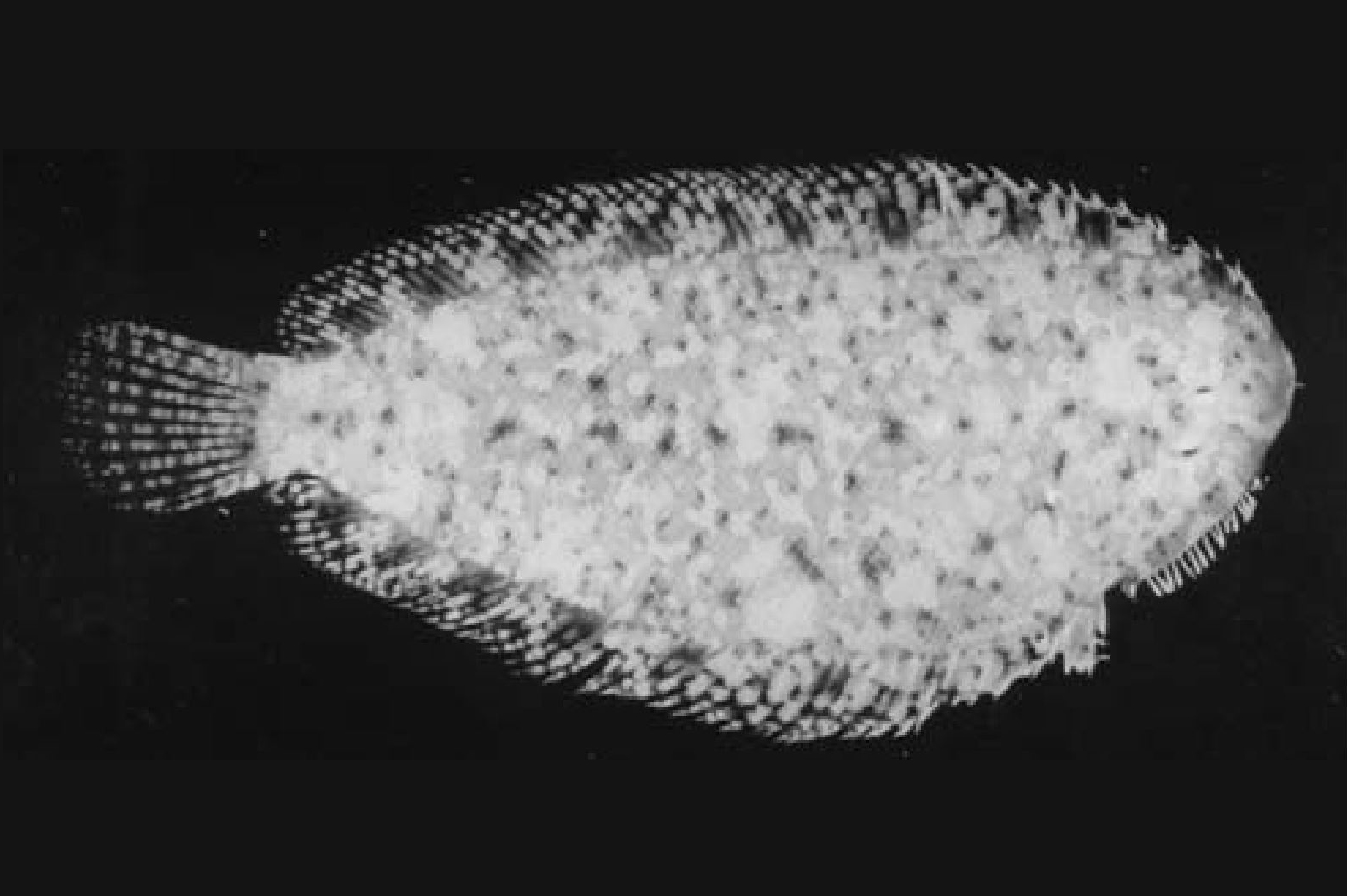Aseraggodes pelvicus Randall 2005

Holotype of Aseraggodes pelvicus. Source: John E. Randall / Atlas of Living Australia. License: CC by Attribution-NonCommercial-ShareAlike
Cite this page as:
Dianne J. Bray, Aseraggodes pelvicus in Fishes of Australia, accessed 28 Jun 2025, https://fishesofaustralia.net.au/home/species/1007
Aseraggodes pelvicus Randall 2005
More Info
|
Distribution |
Swain Reefs, Great Barrier Reef, Queensland. |
|
Features |
Dorsal fin 71; Anal fin 49; Lateral-line scales 81; Vertebrae 36; dorsal pterygiophores anterior to fourth neural spine 14; body depth 2.45 in SL; HL 4.75 in SL; eye diameter 6.4 in HL; upper eye overlapping anterior half of lower eye; interorbital space narrow, 12.0 in HL; caudal peduncle present, its depth 1.45 in HL, its length 10.0 in HL; prominent lappetlike cirri on front of snout and ventral edge of head; lateral line aligned with dorsal edge of upper eye; longest dorsal ray 1.25 in HL; membranous edges of anterior dorsal rays with a row of tubercle-like papillae, many with cirri, a few darkly pigmented; caudal fin rounded and moderately long, 3.4 in SL; pelvic fins long, 1.6 in HL, the tip of longest ray reaching base of fifth anal ray. |
|
Colour |
In preservative - colour of ocular side in alcohol pale yellowish brown with numerous irregular pale spots, none as large as eye, and many smaller brown blotches and dots, the most conspicuous along middle of lateral line. |
|
Remarks |
The series of small tubercle-like papillae at the edge of the membranous ridges of the dorsal and anal-fin rays, many with a small cirrus, and the long pelvic fins appear to be unique to A. pelvicus. |
|
Etymology |
The specific name pelvicus is from the Latin pelvis, in reference to the long pelvic fins, the longest for species of the genus. |
|
Author |
Dianne J. Bray |
Aseraggodes pelvicus Randall 2005
References
Randall, J.E. 2005. A review of soles of the genus Aseraggodes from the South Pacific, with descriptions of seven new species and a diagnosis of Synclidopus.Memoirs of Museum Victoria 62(2): 191-212. PDF Open access
Quick Facts
CAAB Code:37462050
Habitat:Reef associated, sandy areas
Max Size:6.8 cm SL
Native:Endemic
Species Maps
CAAB distribution map
